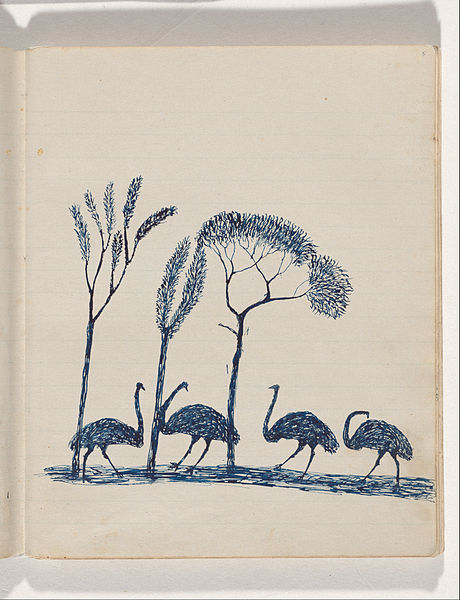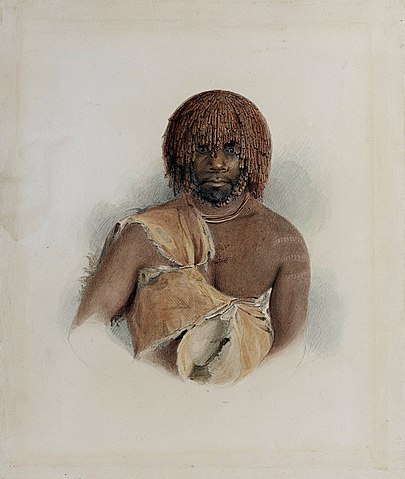
Thammasat University students are cordially invited to participate in a free Zoom webinar on Wednesday 3 August 2022 on Counter-Monuments: Challenging Distorted Colonial Histories Through Contemporary Art And Memorial Practices.
The event will start at 9am Bangkok time.
Hosted by the University of Melbourne, Australia, the webinar offers a discussion exploring past colonial history and legacies and its contradictions against the history experienced by Indigenous Australians.
The Thammasat University Library collection includes several books about the art and culture of Indigenous Australians.
For further information or with any questions, kindly write to this email address:
melbourneconnect-info@unimelb.edu.au
Students may register to participate at this link:
https://events.unimelb.edu.au/event/13328-counter-monuments-challenging-distorted-colonial
The event website notes,
Increasingly across the globe, statues and monuments celebrating imperial conquest and colonial oppression are being defaced, recontextualised, removed by authorities or spectacularly toppled by protestors. It is evident from such acts that public memorials have become significant sites for inciting debate and action on the histories and ongoing legacies of colonial and racist violence.
In Australia, it is routinely noted that there are contradictions in public remembrances that tend to honour white settler lives and accomplishments over Indigenous ones, and a culture of active silence on the violence of colonialism in public presentations of the past. In response, many contemporary Indigenous and non-Indigenous artists have produced public “counter-monuments” to make visible contested histories. In this lecture, Genevieve Grieves and Amy Spiers will discuss how the public’s view of colonial history and its legacies can be confronted and transformed through creative counter-monument practice by drawing on a number of contemporary Australian examples.
Presenters
Genevieve Grieves
Genevieve Grieves, a proud Worimi woman, has more than 20 years’ experience creating dynamic content for film and television, exhibitions, online and multimedia. Her work has consistently won awards and recognition and she is regarded as a leading practitioner of community-engaged content development. Genevieve has a strong leadership role in the arts and cultural sector, contributing to the development of key organizations and also mentoring many emerging First Peoples creatives.
Dr Amy Spiers
Vice Chancellor Postdoctoral Research Fellow at RMIT School of Art
Amy Spiers is an artist, writer and researcher specializing in public and socially engaged art. She is currently a Vice Chancellor Postdoctoral Research Fellow at RMIT School of Art, and has co-edited Let’s Go Outside: Art in Public with Charlotte Day and Callum Morton for Monash University Museum of Art (Monash University Publishing 2022). In 2021 she co-convened with Genevieve Grieves the online symposium hosted by ACCA, Counter-monuments: Indigenous settler relations in Australian contemporary art and memorial practices, and they are co-editing a book on Counter-monuments (Springer, forthcoming 2022).

According to an Australian government website,
First Nations Arts and Culture are a rich contribution to the world’s culture, and to Australia’s diverse contemporary culture and national identity.
First Nations arts include classical, traditional and contemporary practice, including all new forms of cultural expression. This is applied across all art forms and in urban, regional and remote areas.
The Australia Council for the Arts regards First Nations cultures as living forces with their own strengths and influences, not as remnants of the past. We aim to make these cultural expressions of Aboriginal and Torres Strait Islander people a source of pride for all Australians.
The value of First Nations activity to individuals, families and communities is significant culturally, socially and economically, and its potential is significant in all communities. Research by the Royal Melbourne Institute of Technology (RMIT) and the Telstra Foundation about the role of First Nations festivals highlighted not only the economic benefits but improved well-being, as people reported that they had an increase in cultural pride and self-esteem stemming from a sense of inclusion and cultural identity.
Protocols for using First Nations Cultural and Intellectual Property in the Arts.
First published in 2002 and revised in 2007, this protocol guide endorses the rights of Indigenous people to their cultural heritage and supports Indigenous creative practice. This protocol guide encourages self-determination and helps build a strong and diverse Indigenous arts sector. These are key goals and priority areas of the Australia Council for the Arts.
Creative practitioners who work with Indigenous artists or engage with Indigenous cultural heritage in projects, and are funded by Australia Council for the Arts grant assessment panels are required to comply with this protocol guide as a condition of funding.
Over the years, the principles and protocols contained in this protocol guide have also been applied nationally and internationally – educating readers and users on Indigenous Australian cultural heritage, and encouraging meaningful collaborations with Indigenous artists and creators.

In addition to the unique cultural identity of Indigenous Australian art, there is the more recent concern of the impacts of COVID-19 on First Nations arts and culture.
Another Australian government study reports:
This paper outlines the immediate and longer term needs, concerns and potentially catastrophic impacts for First Nations arts and culture in light of COVID-19. This includes potential for the most significant loss of arts, culture and language since the arrival of the First Fleet. Drawing on research and sector intelligence, the paper highlights opportunities for First Nations arts specific support and cross-portfolio advocacy and engagement…
LOOKING TO THE FUTURE Across art forms, the greatest future concerns relate to potential loss of life and cultural knowledge if communities lose their Elders, negative impacts on young people, along with loss of income and art economies. It is clear that the impacts of COVID-19 will be felt for a long time to come and that long term planning is needed. One art sector representative stated that the current situation shows a National Indigenous Arts and Cultural Authority (NIACA) is needed now more than ever – to provide leadership across all art forms and a central authority with direct links to government. The First Nations visual arts sector is still recovering from the global financial crisis. While art centre sales have been growing for eight years, average sales are still 12% lower than they were at their peak in 2007–08.43 Desart believes a ten year plan will be needed to rebuild the ecology, which includes relationships with private galleries. The Aboriginal Art Centre Hub of Western Australia suggested that planning and recovery support could include arts alongside tourism, which will also be hard hit. Ananguku Arts mentioned that the current crisis has highlighted the need for succession plans for future generations of leaders and to rethink online delivery for artists who do not have a gallery. Representatives from the First Nations theatre and dance sectors are also bracing for long term impacts and believe economic support should continue after the shutdown is lifted.

(All images courtesy of Wikimedia Commons)
